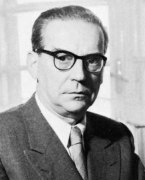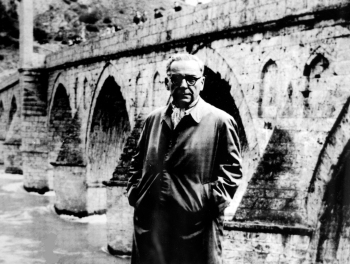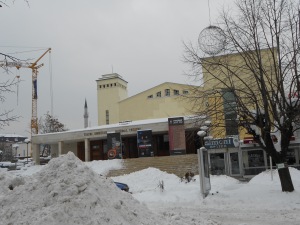May 5, 2012
I began the next session by returning students’ papers on A Lesson before Dying, congratulating them on their solid work, and inviting them to meet me during office hours if they had questions about my comments and their grades.
Returning to our discussion of King’s letter, I said that effective logos, the substance of any argument, requires more than presenting evidence in support of a claim, that it requires leading the reader through the evidence toward a conclusion, using deductive and inductive methods of reasoning. To begin demonstrating the inter-connectedness of the deductive and inductive processes, I referred them to three sentences on the board, quoted below, each extracted from King’s fifteenth paragraph, the one alluding to Martin Buber and Paul Tillich and their condemnation of segregation as sinful. Together, the three sentences, I said, represent a syllogism, a three-part deductive statement:
Major Premise: All laws that degrade the human personality are unjust.
Minor Premise: Segregation laws degrade the human personality.
Conclusion: Segregation laws are unjust.
All syllogisms, I explained, begin with a major premise, a generalization about a class or genus—all laws—a premise that King rightly assumes his primary audience, the clergymen, will accept without challenge. The minor premise, I continued, then makes a generalization about a member or species of that group, “segregation laws,” asserting that they “degrade the human personality”; therefore, the deductive logic runs, if the major premise is true, and if the minor premise is true, then it necessarily follows that all segregation laws are unjust.

The Logic of Deductive and Inductive Reasoning (Source: TOKnow-11)
“But where,” I continued, “has King provided his proof—beyond these allusions to Jewish and Christian theologians—that supports the minor premise, that segregation laws ‘degrade the personality’?” Hearing no response, I referred the students to King’s fourteenth paragraph, where King presents abundant and passionate evidence that “segregation laws degrade the personality,” and he does so, I explained, by using inductive logic, which begins with an hypothesis, then moves through a series of experiments or examples to confirm or contradict the hypothesis. I then referred the students to the inductive outline of King’s fourteenth paragraph, which answers the clergymen’s question about waiting for freedom and, in so doing, tests the hypothesis about the degrading effect of segregation:
Hypothesis: Segregation laws degrade the personality.
Results of Testing Hypothesis:
Experiment #1: “Vicious mobs” lynch your family members.
Experiment #2: “Hate-filled policemen…kick…brothers and sisters.”
Experiment #3: Twenty million African Americans live in an “airtight cage of poverty.”
Experiment #4: African American children are excluded from amusement parks, and fathers have no explanation.
Experiment #5: African American adults are barred from motels.
Experiment #6: African American women and men are never accorded respect, never called by their names; they suffer, therefore, a “degenerating sense of nobodiness.”
Conclusion: Segregation laws degrade the human personality.
After reviewing this inductive process, I asked the students to note that the inductive conclusion becomes the minor premise for King’s syllogism two paragraphs later. This blending, I said, quoting from Questioning,
shows that our minds work inductively, helping us interpret to experience, and that our minds also work deductively, helping us to reason from our discovered premises to further conclusions. Persuasive writing…makes transparent this blending of inductive and deductive thought. To put it negatively, had Dr. King omitted paragraph 14, with all its examples—proofs—of the damaging effect of segregation laws, then his minor premise in paragraph 16, that segregation laws damage the personality, would be a logical fallacy. That is, King would have been guilty of begging the question, the fallacy of assuming as proven the very idea that needs to be demonstrated. (156-57)
This blending of induction and deduction, I continued, also further strengthens King’s ethos, as “he offers his readers cool logic and sound evidence to persuade them that they cannot ask his followers to ‘wait’ any longer for freedom” (157).
Finally, I asked the class to recall King’s deliberative purpose, to advise the clergymen and all Americans to guarantee the country’s ‘enduring and prevailing’ by rising to its high ideals of brotherhood. Such a purpose, I said, moves him away from judicial discourse, away from accusing and defending, and toward meditational discourse, striving “to bridge the gap between ‘you,’ the clergymen who have criticized him and the racists who have jailed him, and ‘we,’ the victims of segregation”(157).
To support this claim, I asked the students to consider one more sentence on the board, a line rich with parallel rhythms and imbedded figurative language that, together, help us hear and see his vision of unity as he praises blacks and whites working together:
They have carved a tunnel of hope through the dark mountain of disappointment.
By juxtaposing these contrasting images, I said, King not only praises those who have carved the “tunnel of hope” but also invites his critics and those “white moderates” to join in the carving. We see this invitation again in his last sentence, where he urges all his readers to share his hope that “in some not too distant tomorrow the radiant stars of love and brotherhood will shine over our great nation with all their scintillating beauty.” As noted in Questioning, “by saving this inspiring image for the end of his letter, the point where he hopes to have won supporters, not vanquished opponents, King has shown that arrangement works together with parallelism and metaphoric language to move his readers toward embracing a positive common destiny” (158).

Cover of Black Elk Speaks (Source: Wikipedia)
As we neared the end of the session, I reminded the class that our next meeting would focus on an excerpt from John Neihardt’s Black Elk Speaks, another passionate call for justice and ‘prevailing’ through unity. Neihardt, I explained, was a white poet from Nebraska, but his book grew from extended interviews with Black Elk, a holy man of the Lakota tribe, whose vision of tribal and world unity died in 1890 at the Battle of Wounded Knee, where the US Calvary crushed rebellious Native American tribes. From the point of view of the US government, I further explained, Wounded Knee affirmed the doctrine on “Manifest Destiny,” the idea that God ordained white people to move always westward, acquiring land by purchase or by force so that the nation could grow and prosper economically.
However, I continued, from the Native Americans’ point of view, the US government committed genocide at Wounded Knee, a crime made even worse by herding Indians onto reservations, essentially concentration camps, places where Indian culture died and survivors felt utterly broken in spirit, which explains the extremely high rates of unemployment, alcoholism, and suicide on reservations, then and now.

Cover of The Way to Rainy Mountain (Soure: Wikipedia)
We would read another excerpt for the next meeting, I noted, this one from N. Scott Momaday’s book The Way to Rainy Mountain. Another Native American with Kiowa and Cherokee blood, Momaday, I said, wrote his book in celebration of Kiowa culture, a culture also crushed when the US Army forced them onto the reservation at Fort Sill, Oklahoma and deprived them of their Sun Dance, their religion.
Finally, as they read these works, I asked the students to keep Kings’ “Letter from Birmingham Jail” in mind and to reflect on what the three works have in common as protests of injustice and as pleas for unity. “And think of historical patterns in these passionate writings, too,” I said, noting that Neihardt recorded Black Elk’s vision in 1932, when King was a small child, and that Momaday wrote about the fate of the Kiowas in 1969, one year after King was assassinated. To help them find a personal focus for their reflections, I distributed the following journaling prompts, asking student to pick one and to fill up at least a page of their journals in response:
- Describe a holy man or woman from your culture that you have found inspiring.
- What feelings do you have as a Kosovaran as you read about a vision that strives to avoid genocide?
- Narrate a memory of a grandparent and an old custom.
- What do you think Dr. King would say in response to these readings?







![Faculty of Filologjik_1 feb 2012 Fakulteti i Filologjisë (Faculty [College] of Philology)](https://reflectionsonkosovo.files.wordpress.com/2012/02/faculty-of-filologjik_1-feb-2012.jpg?w=300&h=225)
